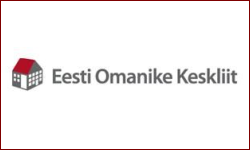 In 2019, Estonian GDP growth was 4.3% y/y in real terms and 7.7% y/y in nominal terms. Although, the growth slowed from previous year, it was still strong and exceeded our expectations – our forecast, published in January, was 3.7%. In addition, GDP growth of the first three quarters was revised up (the third quarter growth was revised up by 0.6 pp).
In 2019, Estonian GDP growth was 4.3% y/y in real terms and 7.7% y/y in nominal terms. Although, the growth slowed from previous year, it was still strong and exceeded our expectations – our forecast, published in January, was 3.7%. In addition, GDP growth of the first three quarters was revised up (the third quarter growth was revised up by 0.6 pp).
In the fourth quarter economy grew by 3.9% y/y in real terms and 5.9% y/y in nominal terms. Seasonally and working day adjusted GDP grew by 0.9% q/q.

Economic growth was driven by ICT sector
In 2019, the main contributor to GDP growth was ICT sector – almost 30% of the growth came from this sector. Last year, higher contribution came also from professional and technical activities, wholesale and retail trade, agriculture and forestry, and manufacturing. Unusually high contribution to the growth came from net taxes on products, which was affected by VAT and excise duty on fuels. Manufacturing, which contributed positively in the first three quarters, did not contribute to economic growth in the fourth quarter. However, the slowdown was expected due to weakened foreign demand and worsened industrial confidence. Construction sector, that has been one of the main contributors to the economic growth in previous three years, contributed negatively last year. The largest negative impact to the growth came mainly from energy sector as electricity production declined due to the sharp rise in CO2 quota price.

Domestic demand was driven by strong investment growth
Last year, the growth of domestic demand accelerated to 5%. The main contribution came from investments, which increased by 13%. 3/4 of investment growth came from business sector investments, which was partly due to the base effect. The largest increase of business investments was in buildings and structures, and means of transport. Households’ investments also increased rapidly, while government investments decreased compared to previous year. The growth of private consumption gradually slowed and was 3% last year. We expect private consumption to slow this year as real growth of net wages should ease somewhat. However, private consumption should still be supported by high consumer confidence and strong financial situation of households.
As foreign demand worsened last year, export of goods has started to decline in the fourth quarter, while the growth of exports of services slowed. However, in the first three quarters of the year, the growth of exports of goods and services was very strong, which held the growth of total exports at 5% last year. We expect that weakening of the foreign demand should carry forward into this year and export growth should slow. As the growth of export exceeded import growth, the contribution from net export to the economy was positive.
Economic growth in Estonia is expected to slow
According to our latest Swedbank Economic Outlook published in January, economic growth in Estonia is expected to slow to 2.4% this year. Our forecast does not include possible impact of planned pension reform. It is also too early to measure possible impact of coronavirus, but if the spread of the virus would be soon under control, the impact to the euro area economy will be limited.
For more information please contact Ms. Marianna Rõbinskaja, +372 888 7925, marianna.robinskaja@swedbank.
This email is sent through the web-based distribution system of Swedbank Macro Research. As a subscriber you can change your settings regarding what publications you will receive by clicking “Change your settings”. You can also unsubscribe from this particular newsletter by clicking “Unsubscribe”. Information on the Swedbank Principles of processing personal data can be found here.













